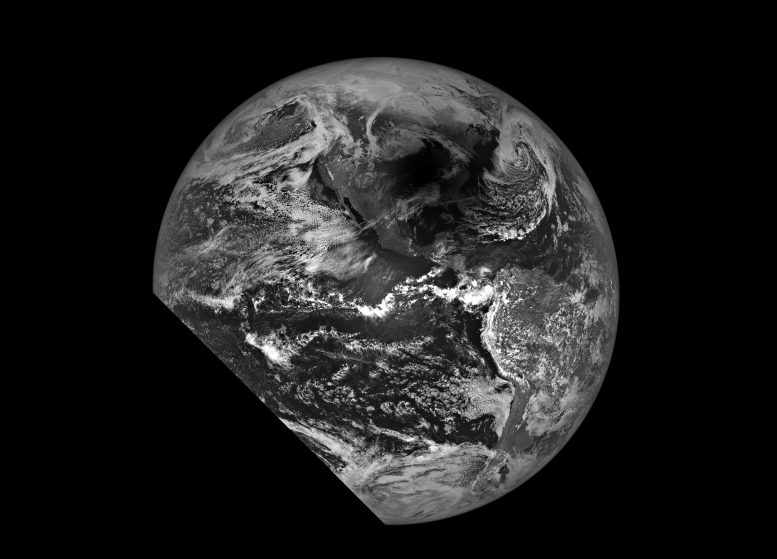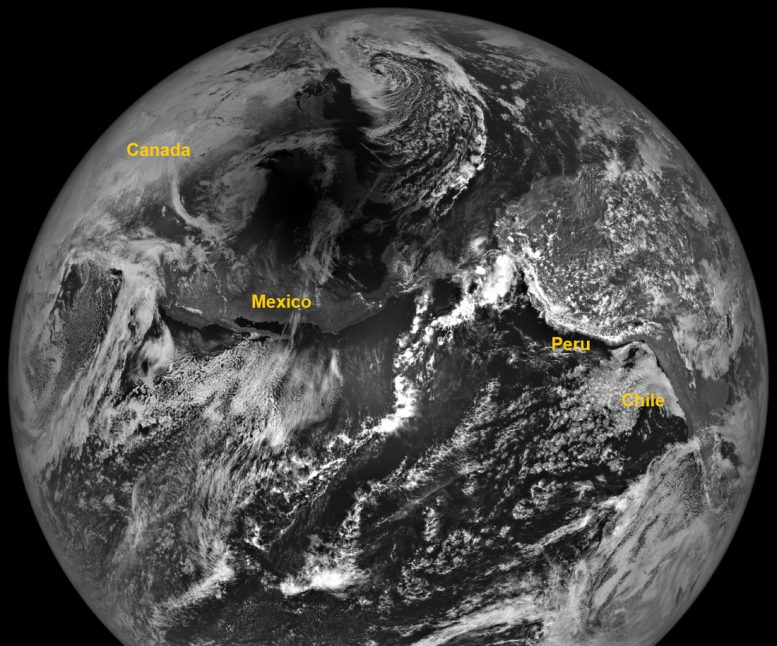
This spectacular image showing the Moon’s shadow on Earth’s surface was acquired during a 20-second period starting at 2:59 p.m. EDT (18:59:19 UTC) on April 8, 2024, by NASA’s Lunar Reconnaissance Orbiter. When LRO acquired this image, the shadow of the Moon was centered near Cape Girardeau, Missouri. Credit: NASA/Goddard/Arizona State University
NASA’s Lunar Reconnaissance Orbiter captured a striking image of the Earth during the April 8 solar eclipse from its position 223,000 miles away, showcasing the advanced imaging capabilities of its camera suite.
As the Moon blotted out the Sun to viewers across the United States during the April 8 solar eclipse, NASA’s Lunar Reconnaissance Orbiter (LRO) captured an image from some 223,000 miles away of the highly anticipated celestial event.
There are three cameras that comprise the LRO camera (LROC) suite: two Narrow Angle Cameras (NAC) and one Wide Angle Camera. The Earth’s image with the shadow in it was acquired by one of the two Narrow Angle Cameras.

When LROC acquired this image on April 8, 2024, the shadow of the Moon was centered near Cape Girardeau, Missouri. Credit: NASA/GSFC/Arizona State University
The LROC Narrow Angle Cameras are line scanner cameras: they only have one line of pixels, and images are built up line-by-line by the spacecraft’s motion as it orbits the Moon.
Acquiring an image of Earth requires the spacecraft to rapidly rotate to build up the image.
Lunar Reconnaissance Orbiter is managed by NASA’s Goddard Space Flight Center in Greenbelt, Maryland, for the Science Mission Directorate at NASA Headquarters in Washington. Launched on June 18, 2009, LRO has collected a treasure trove of data with its seven powerful instruments, making an invaluable contribution to our knowledge about the Moon. NASA is returning to the Moon with commercial and international partners to expand human presence in space and bring back new knowledge and opportunities.
https://news.google.com/rss/articles/CBMidmh0dHBzOi8vc2NpdGVjaGRhaWx5LmNvbS9uYXNhcy1sdW5hci1yZWNvbm5haXNzYW5jZS1vcmJpdGVyLWNhcHR1cmVzLTIwMjQtc29sYXItZWNsaXBzZS1zaGFkb3ctZnJvbS0yMjMwMDAtbWlsZXMtYXdheS_SAQA?oc=5
2024-04-17 09:27:03Z
CBMidmh0dHBzOi8vc2NpdGVjaGRhaWx5LmNvbS9uYXNhcy1sdW5hci1yZWNvbm5haXNzYW5jZS1vcmJpdGVyLWNhcHR1cmVzLTIwMjQtc29sYXItZWNsaXBzZS1zaGFkb3ctZnJvbS0yMjMwMDAtbWlsZXMtYXdheS_SAQA
Tidak ada komentar:
Posting Komentar